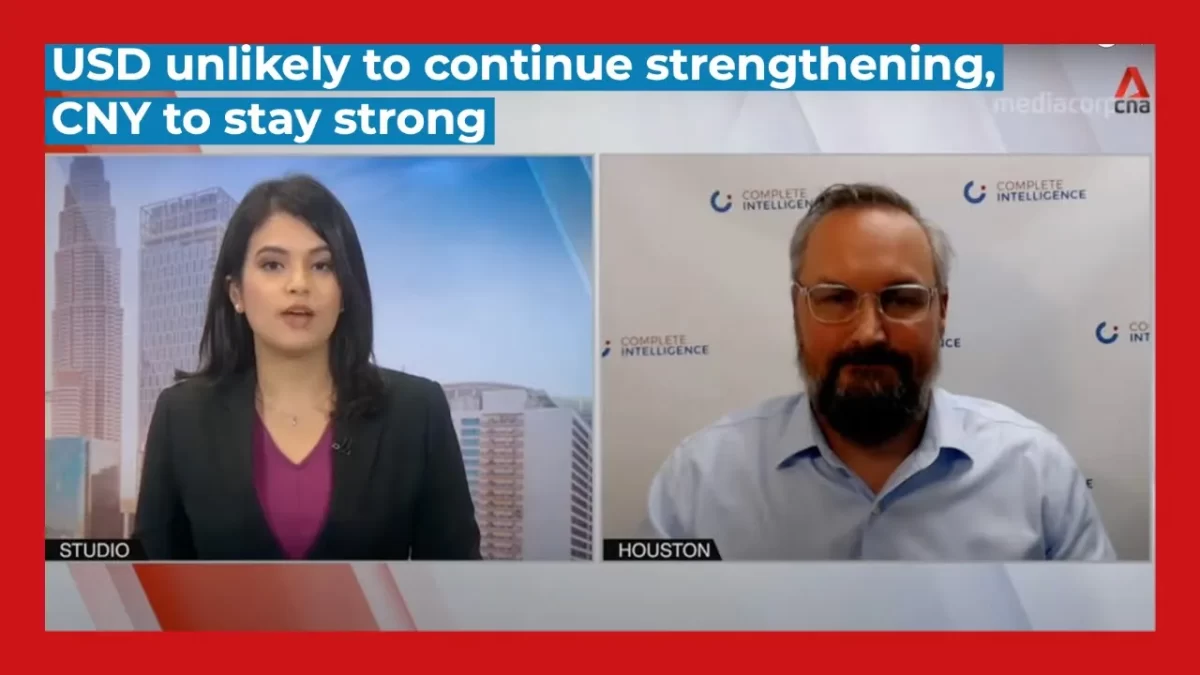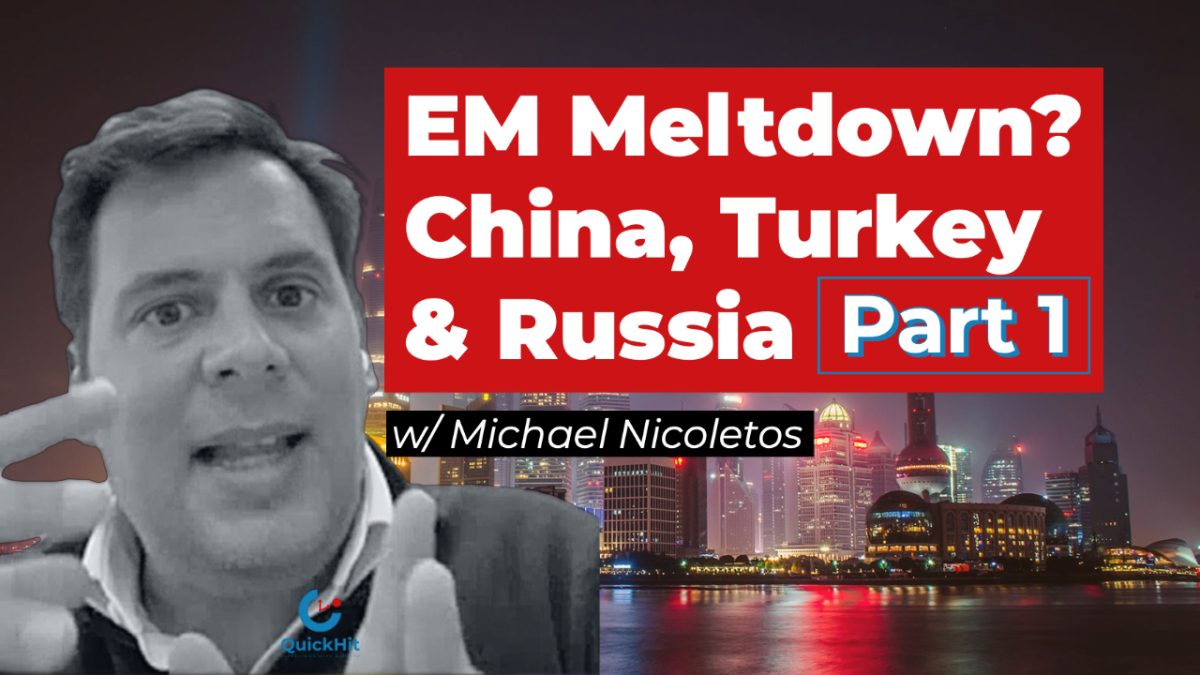US bond prices are pointing to an oncoming recession, raising the question of whether the Fed stays the course on its path to rate normalcy. Tony Nash, CEO, Complete Intelligence, discusses.
This podcast first appeared and originally published at https://www.bfm.my/podcast/morning-run/market-watch/if-recession-is-coming-does-jay-powell-still-raise-rates on March 31, 2022.
Show Notes
SM: BFM 89 Nine. Good morning. You’re listening to the Morning Run. It’s 7:05 A.M. On Thursday, the 31 March, looking rather cloudy outside our Studios this morning. If you’re heading on your way to work, make sure to drive safe. First, let’s recap how global markets closed yesterday.
KHC: US markets down was down. .2% S&P 500 down .6% Nasdaq down 1.2%. Asian markets, Nikkei down zero 8%. Hong Kong’s up 1.4%. Shanghai Composite up 2%. STI up 3%. Fbm KLCI close flat.
SM: So fairly red on the board today. And for some thoughts on where international markets are headed, we have on the line with us, Tony Nash, CEO of Complete Intelligence. Tony, good morning. Always good to have you. Now markets are speculating that the brief inversion of the two over ten year US Treasury yields this week is a sign of an oncoming recession. So do you agree with this? And if not, what might explain these brief periods of inverting or inversion?
TN: It could be a sign. Shazana, I think we have to see a more consistent and meaningful inversion to say that we’re definitely headed into a recession. So what this means is that what a yield curve inversion means is that people have to pay more for shorter duration money. So right now, if you look at, say, the five year treasury, the yield is 2.4% and the ten year is around two point 35%. So it’s cheaper to borrow longer term money, which is really weird. It could have a lot of reasons. Maybe companies need money more. They’re short on cash and they’re more willing to pay for it. So that would be a sign of a recession. So if we see a more consistent yield driven version, we see the two and the five years continue to be higher rates, then we need to be more concerned. For now, there’s a lot of speculation, but we just don’t necessarily see the certainty of it yet.
TCL: Tony, markets are wondering whether the Fed is going to push ahead with this rate policy on tightening because this volatility both in share markets and bond markets is a bit muddling for the analysts and the fund managers to make sense of. What’s your point of view?
TN: Yeah, I think at least for the last few months the Fed has been fairly consistent. But of course, we’ve had exogenous type of events, the war between Russia and Ukraine being the biggest, and that has had an impact on raw materials costs. So food in the case of Ukraine with wheat and sunflower oil and all this other stuff and energy with Russia. So it doesn’t matter what a central bank does necessarily. They can’t push down the price of oil through monetary policy. What they can do is demand destruction. And this is why we think that they’re going to lead with some fairly sizable 50 basis point rises, say in May for sure, and possibly in June. I don’t know if you saw that today. JPmorgan was out with a note saying that there will be 50 basis point rises in both May and June, which would be a pretty sharp rise in interest rates. The good news is we see a sharp rise initially, but then they’ll only do that for a short period of time to cut off demand pretty quickly and hopefully cut down on some of the demand for petrol and oil and some of these other materials.
TCL: Okay. So your sense is that the Fed and JPowell will stay the cost and increase rates, but what’s happening in Japan is quite the opposite. They’re actually showing quite discernible decoupling because they’re staying with zero interest rates. I think the ten year yield on the JGBs is about zero point 25%. What does that spell? Because the Japanese yen is now down at a six minute seven year low. Obviously, there’s a big sense of what’s going on here. What’s your point of view?
TN: J I think yesterday announced that they would have unlimited purchases of Japanese government bonds. So what they’re doing through that is it’s an open door for them to insert currency. It’s kind of a backdoor to growing their money supply, which leads to evaluation of the yen. And so Japan is in a place right now where they want to grow their export sector. They do that through yen evaluation. The competition between, say, Japan, China, Korea is there. China’s exports keep growing despite a strong Chinese Yuan Japan. There are other central banks. It’s partly that reason, meaning the ECB tightening and the Fed tightening, but it’s also competitiveness of Japan of their exports. So there are a number of reasons at play there.
KHC: So you were saying that earlier that maybe we will see 50 basis points increase in May or June. How do you think the share prices of US banks and financial institutions typically would do in this kind of environment, and would they be ultimate winners?
TN: They could be, I guess the only dilemma there would be the impact on mortgage. So if the Fed raises rates really quickly and it has an impact on mortgage demand and mortgage defaults, then that could be a real problem for banks. But short of that, I think they’re probably in a decent place to do fairly well. Of course, that’s company specific and all that sort of thing. But I think financial services in general should do fairly well on a relative basis.
TCL: Yeah. Tony, if it goes ahead as follows. Right. And Japan does not increase rates like the US is, it just extends its debt to GDP ratio. I think Japan is now 255% to GDP. I think the US is well above 100%. That’s quite disconcerting. What happens? How does it all end? Because it’s quite clear that Japan cannot raise rates because it just cannot fall into recession.
TN: Well, the problem with Japan raising rates is their population. And you all know this story, but they can’t necessarily raise productivity without automation. So they have to automate to be able to raise their productivity, to be able to raise their rate of growth. So that’s the foundational problem Japan have now with the BOJ buying with their JGB purchases, they’re actually buying the debt that the Japanese Treasury creates. Okay. So it’s this circular environment where the Japanese Treasury is creating debt to fund their government, and the BOJ is buying that debt basically out of thin air. They’re retiring. Okay. So Japan is in a really strange situation where it’s creating debt and then it’s buying it and retiring it. And this is a little bit of modern monetary theory, which is a long, long discussion. But Japan is in a very strange place right now.
SM: Tony, thanks very much for speaking to us this morning. That was Tony Nash, CEO of Complete Intelligence, giving us his take on some of the trends that are moving markets at the moment. And in the conversation there with a look at Japan and just the curious situation that it finds itself in amid all these economic and geopolitical pressures happening in the world.
TCL: Yeah, it’s really weird, right? The Japanese are so much in debt and they can’t get out of it. They’re creating these debts and they’re buying back this debt. It’s quite insane. But America does the same thing with their bond buying program until this year. Right. And that they haven’t even significantly cut that program. It’s really weird because what happens then for the US dollar? What happens to the Japanese yen down the line when your paper currency is near as meaningless? Right. It’s not banked by anything. It’s just being printed every day Willy nilly. It’s really weird.
SM: So all eyes are, of course, on the Fed, I guess, the most powerful central bank in the world, and how much it’s going to raise rates when it’s actually going to start or stop its QE in since quantitative easing, opposite of that. Somebody tell me what it means. Qt. There we go. And when they start reducing, that’s something that everyone’s watching very closely. Let’s take a look at some of the international headlines that have caught our eye. We see something coming out of Shanghai. Volkswagen said yesterday that it would partly shut down production at its factory in Shanghai because the lack of key components indicating further how a resurgence of the Omikan variant has disrupted the Chinese economy and global supply chains. The Shanghai factory operated in a joint venture with SAIC of China, and it’s one of Volkswagen’s largest facilities. It shut down for two days in mid March, but reopened now. It looks like it’s going to have to shut down again.
KHC: Yes. And the company also gave indication they didn’t give actually any indication on when normal production will resume. But China is booked Vegas largest market in the essential source of sales and profit. So the country is in the midst of the worst outbreak since 2020. And so that should prompt the government to impose lockdowns and restrictions. And even car maker like Tesla is also having a large factory in Shanghai also have to suspend production because of this strict covet policies. And so voice mechanics, they’re actually having a lot of shortages and slowdowns in other markets as well.
SM: So it’s really the twin it’s the twin issues, right? It’s the pandemic on one hand and then it’s also the geopolitical events in Ukraine that’s really affecting it’s, leading to a shortage of auto parts. So all this comes together and it’s not great for car makers in Shanghai at the moment. Turning our attention to another headline, if we look over at Russia, Russia is going to lift the short selling ban on local equities later today. And this is actually removing one of the measures that helped limit the declines in the stock market. After a long, record long shutdown, the bank of Russia also said equities trading hours will be expanded from a shortened four hour session to the regular schedule of 950 to 650 P. M. Moscow time. So I guess they’re trying to get back to normal but how we see that impact the stock market is still, I think, an open question. Yeah.
KHC: And since the stock market has since that stock actually gained 1.7% and the daily move also has been limited. Prior to the resumption of trading, the Russian government actually took measures including preventing foreigners from exiting local equities and banning short selling and to avoid the repeat of 33% slump scene in the first day of the Ukraine invasion last month.
TCL: Yeah, this whole Russia Ukraine invasion is set off a domino effect of domino effect quite catastrophic. Or repercussions manufacturing in capital markets in currencies. How does it all end?
SM: We don’t know. We don’t know the end to that story. And how long 717 in the morning. Stay tuned to BFM 89.9%.





